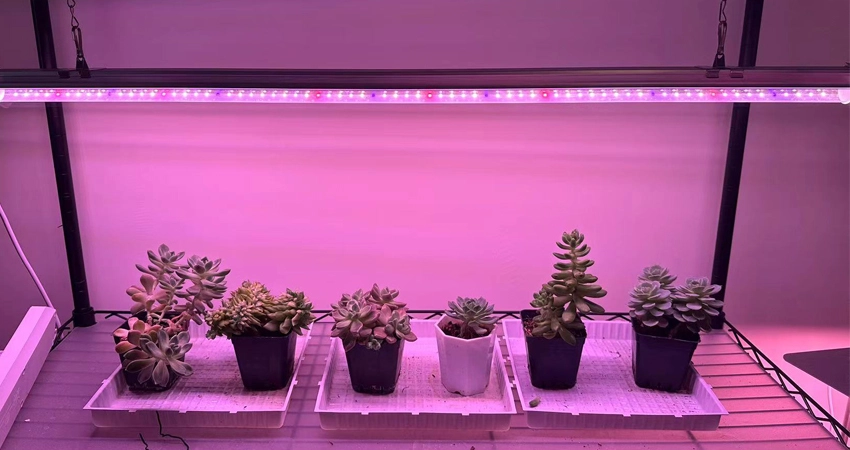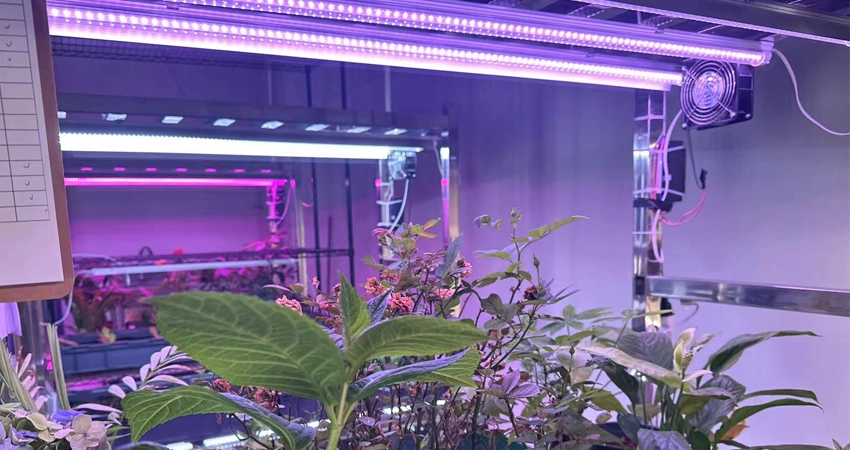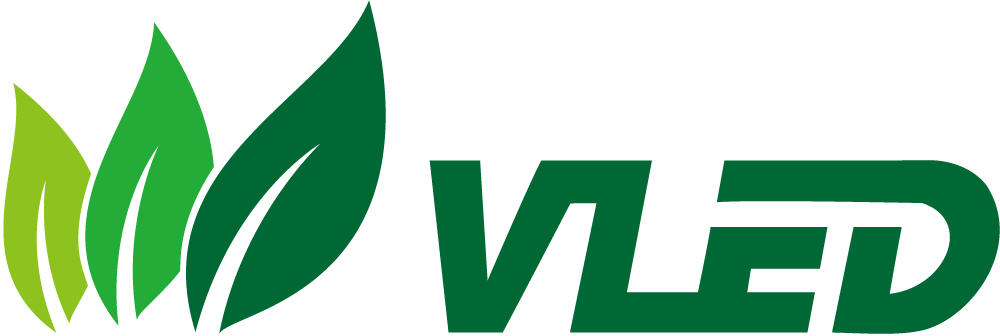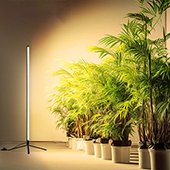Menu
Can Plants Grow in Tube Light?
When growing plants or vegetables at home, you may face the challenge of insufficient light. You might wonder: can we “turn on a light” for the plants to supplement the light they need?
Earlier, some people tried using regular household lights to provide extra light for plants. Indeed, it might work to some extent for short periods or at low intensities. But in the long run, it doesn’t meet the comprehensive lighting conditions needed for plant growth.
Another common method is using fluorescent lights to supplement light for plants. You might have seen a few lights hanging in indoor planting areas, acting like “artificial suns” for the plants. However, they don’t seem to be quite powerful enough for the plants.
Just like us humans, plants also have their own nutritional needs. However, what they need isn’t protein and vitamins, but specific wavelengths of light for photosynthesis. This is how they grow strong and healthy.
As for those regular household lights and fluorescent lights, although they can provide some light, their spectrum isn’t comprehensive. Over time, plants may suffer from nutrient deficiencies and restricted growth.
To address this issue, scientists have designed LED grow light tubes specifically tailored to meet the needs of plants. These light tubes act like personal nutritionists for plants, accurately providing various light nutrients they require. This enables them to thrive and grow robustly even in places with poor lighting conditions.
Let’s delve into why these custom-designed LED light tubes are the best choice for promoting healthy plant growth!
Table of Contents
Limitations of Common Lighting and Fluorescent Lights
Common Lighting for Plant Growth
Have you ever considered using your table lamp or ceiling light as a substitute for sunlight for your plants? While theoretically, these ordinary lighting fixtures do emit some brightness, making the room less dark, for plants, they’re like feeding them a bunch of bland, nutritionally-deficient snacks.
Common lighting fixtures are typically designed to meet human visual needs, primarily emitting white or warm-colored light, which doesn’t encompass the full spectrum of light required for plant growth.
While plants may not immediately wither under such lighting, in the long term, due to the lack of key wavelengths of light (such as red and blue light), they may grow slowly, develop poorly, exhibit pale leaf coloration, and their yield and quality may also be affected.
Fluorescent Lights for Plant Growth
Fluorescent lights, compared to common lighting fixtures, have some slight advantages in certain aspects. They emit a spectrum closer to sunlight, especially some fluorescent tubes with daylight color temperatures. However, this still doesn’t fully meet the requirements of plants.
The spectrum produced by fluorescent lights mainly focuses on the visible light range, containing a certain proportion of blue light, which helps promote chlorophyll synthesis and stem elongation in plants. However, they lack sufficient red light, which is crucial for flowering, fruiting, and root development in plants.
Fluorescent lights have relatively low energy efficiency and limited lifespan. When used for extended periods, they tend to generate heat quickly, which could also affect the growing environment for plants.
Wrap-up
Simply put, whether it’s common lighting fixtures or fluorescent lights, they are designed for human illumination needs and are not tailored specifically to meet the physiological requirements of plants.
Both of these light sources fail to provide all the necessary spectral components required for plants to undergo effective photosynthesis, especially those specific wavelength lights that play crucial roles in different stages of the plant growth cycle.
Moreover, they also fall short in terms of energy consumption, durability, and heat management, unable to meet the optimal conditions required for plant growth. Consequently, although plants may survive under short-term or low-intensity lighting conditions, they prove inadequate for long-term and efficient cultivation needs.
To achieve healthy and robust plant growth, we need to turn to LED grow light tubes specifically designed for plants.
These fixtures not only simulate natural light spectra but also possess advantages such as energy efficiency, environmental friendliness, and high efficiency. They are the ideal choice for modern indoor gardening.
Analysis of the Advantages of LED Grow Light Tubes
Customized Spectrum
You might have heard that LED grow lights are like “personal nutritionists” for plants, and that’s because they possess unique spectrum customization capabilities.
Unlike common lighting fixtures and fluorescent lights that offer limited spectral ranges, LED grow lights can precisely adjust the types and intensities of light according to the light requirements of plants at different growth stages.
For instance, blue light helps promote leaf development and stem elongation in plants, while red light is beneficial for flowering, fruiting, and root system enhancement.
By combining different LED chips, we can create lighting environments that cover almost the entire visible spectrum and even extend to the invisible spectrum (such as ultraviolet and infrared light), meeting the comprehensive needs of various plants from seed germination to fruit maturity.

How Grow Light Tubes Mimic Sunlight Spectrum
The design of LED grow lights is inspired by the principles of sunlight in nature. Scientists have discovered that various wavelengths of sunlight are crucial for different physiological processes in plants.
LED grow lights can accurately mimic the sunlight spectrum, providing plants with the full spectrum or specific bands of light they need.
For example, during the early stages of plant growth, more blue light helps promote lush foliage; while during flowering and fruiting stages, increasing exposure to red light can effectively induce flower bud differentiation and maturity.
This fine-tuned control makes plants feel as if they’re basking in the sunrise and sunset of the natural world, thereby achieving optimal growth conditions.
The Advantages in Energy Efficiency, Lifespan, and Environmental Friendliness
It’s worth mentioning that LED grow lights demonstrate significant energy-saving effects in practical use. Due to their high photoelectric conversion efficiency, they can convert more electrical energy into useful light energy for plants, greatly reducing energy consumption.
Furthermore, LED growing lights have a long lifespan, typically lasting tens of thousands of hours or more. This means that during long-term indoor cultivation, the frequency of replacing fixtures is significantly reduced, saving on maintenance costs.
Moreover, LED plant lights generate relatively little heat during operation. This not only prevents plant damage caused by overheating but also reduces additional energy consumption from cooling devices like air conditioners, aligning more with the modern principles of green and sustainable development.

Applications of LED Grow Light Tubes
>> Home Gardening and Balcony Planting
Creating a Mini Garden at Home: If you live in an apartment with a small balcony, simply hanging LED grow lights can create a sunlight-like environment for your herbs, small fruits and vegetables, or succulents, allowing them to thrive indoors.
Cultivating Potted Vegetables: Whether you’re growing bean sprouts, cilantro, or some cherry tomatoes and strawberries, placing LED grow lights in suitable positions ensures that your plants receive adequate lighting, allowing you to enjoy fresh produce all year round.
>> Commercial Vertical Farms and Greenhouses
Utilizing Space in Vertical Farms: Commercial vertical farms utilize stacked cultivation racks and LED grow lights to establish efficient agricultural production systems.
This not only saves land resources but also allows LED lights to precisely adjust the lighting according to the light requirements of each layer of plants, ensuring that each crop receives the most suitable spectrum. This significantly increases yield and quality.
Optimizing Supplementary Lighting in Greenhouses: Traditional greenhouses often rely on natural light, but when faced with overcast days or shorter daylight hours in winter, LED grow lights come in handy.
Through intelligent control systems, LED lights can flexibly adjust light intensity and duration, ensuring that crops in the greenhouse maintain stable growth rates and good growth conditions throughout the year.
>> Cultivation of Specific Plant Species
Propagation of Medicinal Plants: Medicinal plants such as ginseng and dendrobium are particularly sensitive to lighting conditions. With the help of LED grow lights, it’s possible to simulate the optimal light environment for these plants, promoting rapid reproduction and increasing the content of effective components in medicinal herbs.
Care for Succulent Plants: For enthusiasts of colorful and diverse succulent plants, LED grow lights help control light intensity and spectrum, enhancing the vibrant colors of succulents while also facilitating their normal growth and shaping.
Cultivation of High-Value Flowers: High-end flower varieties like orchids and roses can benefit from targeted spectrum provided by LED grow lights. This not only accelerates their growth process but also optimizes flower color and form, further increasing their market value.
Conclusion
To sum up, everything mentioned earlier, ordinary LED light tubes may indeed provide some light supplementation for plants in the short term, but they are far from sufficient to ensure vigorous growth.
It’s like how we can’t rely solely on instant noodles for our meals; we need a well-rounded diet for good health!
In this article, we’ve witnessed the remarkable capabilities of LED grow light tubes. They enable plants to enjoy nearly perfect lighting environments indoors.
Within the realm of indoor cultivation, LED grow light tubes play an indispensable role, serving as the ultimate partner for promoting robust plant growth.
Get in touch with us!
From custom light planning, to tailored quotes, and everything in between, our team of horticulture experts are always ready to assist.




